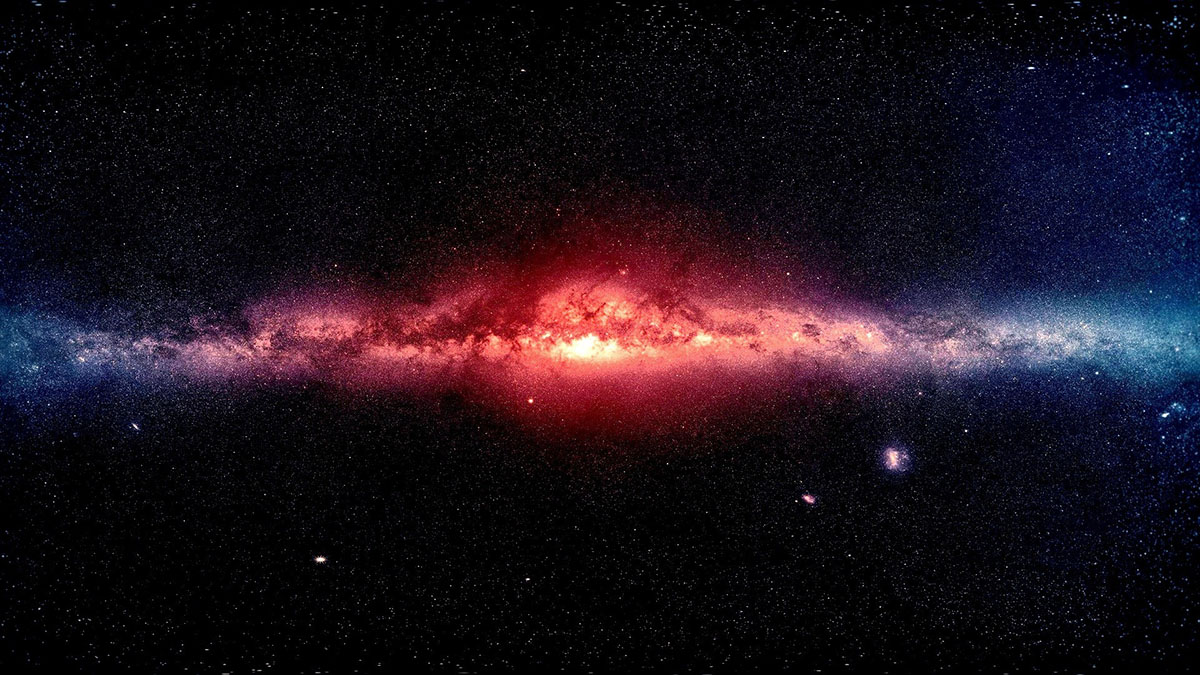how we know the milky way is warped and twisted, and how it got that way

Galaxies are large and often hundreds of thousands of light years apart, so unless you pay close attention when looking at them through a telescope, they seem like serene star cities orbited by their miniature counterparts, floating peacefully through space. But if you look again, you’ll quickly see that the galaxies we see today were created by violence. They eat each other. They’re twisted and bent by gravity. They smash into each other. Even our own Milky Way is destined to collide with the Andromeda galaxy in an event that will last for almost two billion years as the massive stellar objects dance around and through each other before finally merging, producing an elliptical cloud of gas, dust, and stars.
But that’s not to say it would’ve been smooth sailing for our galaxy until that point, 3.75 billion years in the future. It was created by collisions between other, smaller galaxies, all of which left their traces in Milky Way’s shape, and astronomers recently found a reminder of that legacy when studying a certain type of stars known as Cepheids. These stars pulse in a predictable pattern, making them perfect markets of astronomical distances and motion. They also appear to closely follow the galaxy’s disk, so in theory, after observing enough of them, you’d get a 3D model of the Milky Way’s outline. And this is exactly what a team of Chinese and Australian researchers did when combining data on 1,339 Cepheids.
As it turns out, our galaxy is indeed a thin disk roughly 100,000 light years across made up of barred spirals. But it’s also twisted in an S-shaped pattern due to the force the central disk of the Milky Way exerts on the galaxy’s outer regions, its distribution of mass torquing the large spiral clouds of dust and gas as it rotates. It’s been suspected for a while that we don’t live in a flat disk, but there just hasn’t been enough data to assemble a proper model until now, and what it reveals is both a clear confirmation of the suspicions and isn’t actually that unique. Many other galaxies exhibit similar configurations as their spirals and disks are twisted and warped by the gravitational forces of their heavy nuclei or tides from passing neighbors.
If we keep looking, we can find even more bizarre shapes appearing with some regularity, usually the results of near-misses and collisions with neighbors or passing galaxies in progress. What this discovery does show us, however, is that just because vast clusters of stars and matter are being bent over the course of hundreds of millions of year and the typical distance between stars means there are relatively few explosions and ejections during collisions, doesn’t mean there aren’t immense forces acting on galaxies, constantly reshaping them to gravity’s whims, and sending solar systems riding waves of twisting hydrogen and helium. It appears that not even the largest structures in our cosmos are standing still.
See: Chen, X., et. al., An intuitive 3D map of the Galactic warp’s precession traced by classical Cepheids, Nature Astronomy (2019) DOI: 10.1038/s41550-018-0686-7





